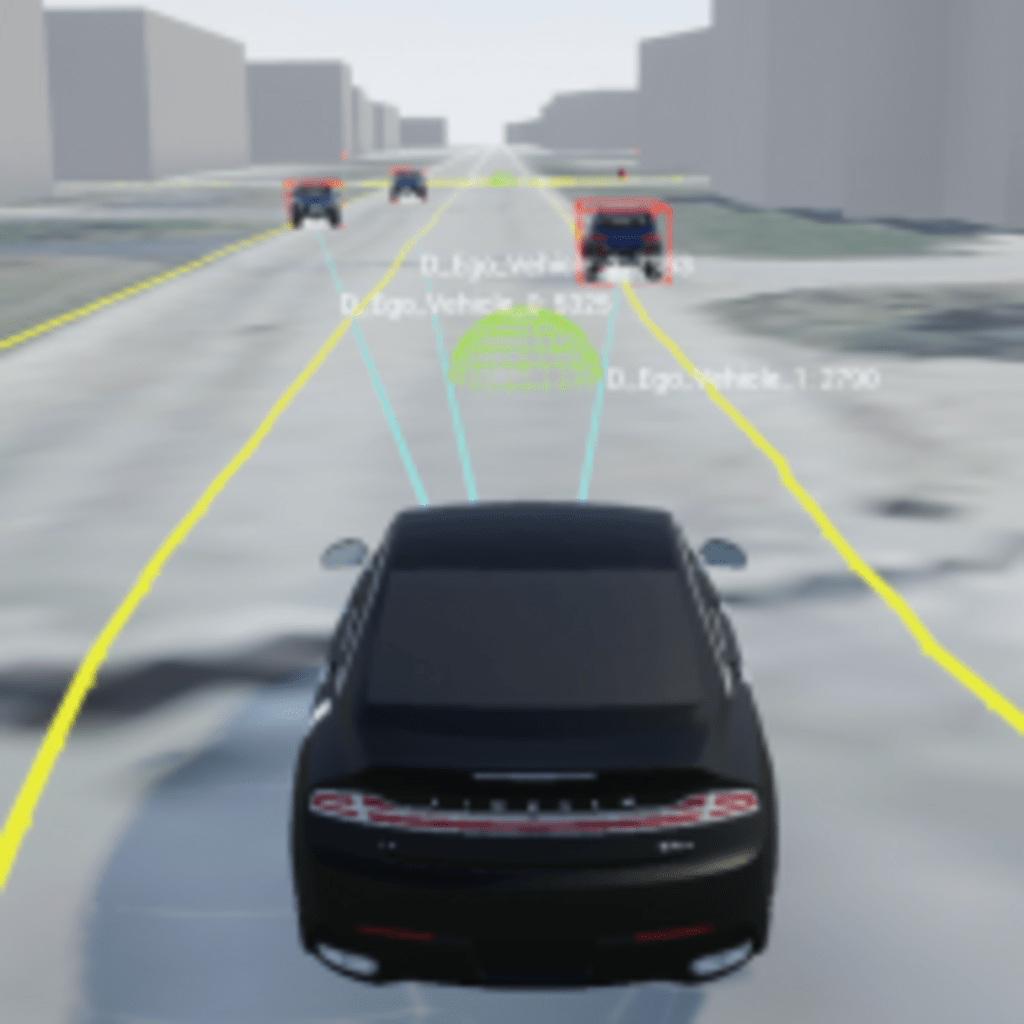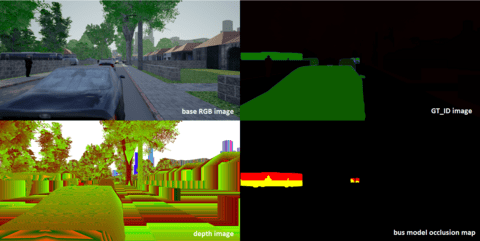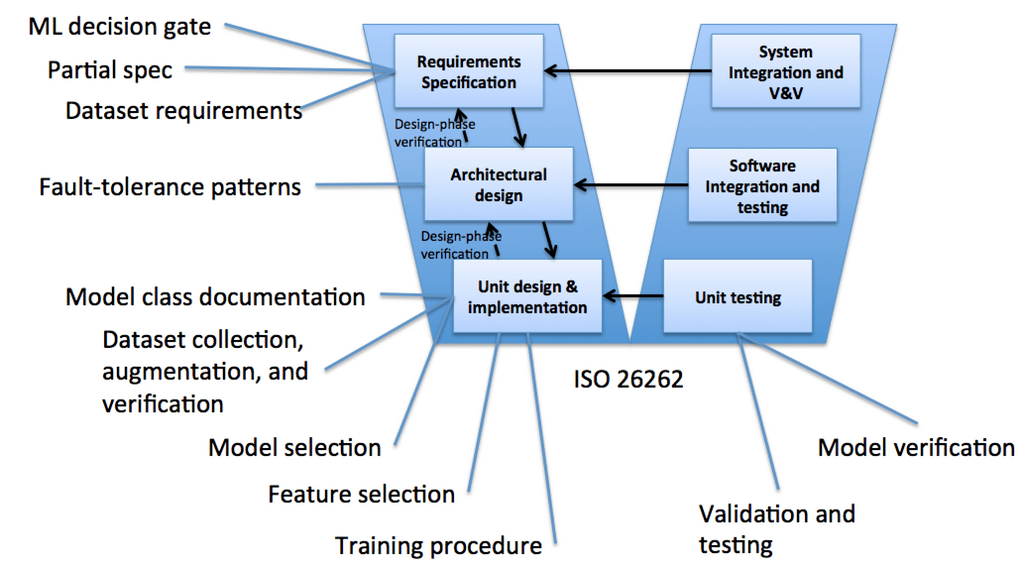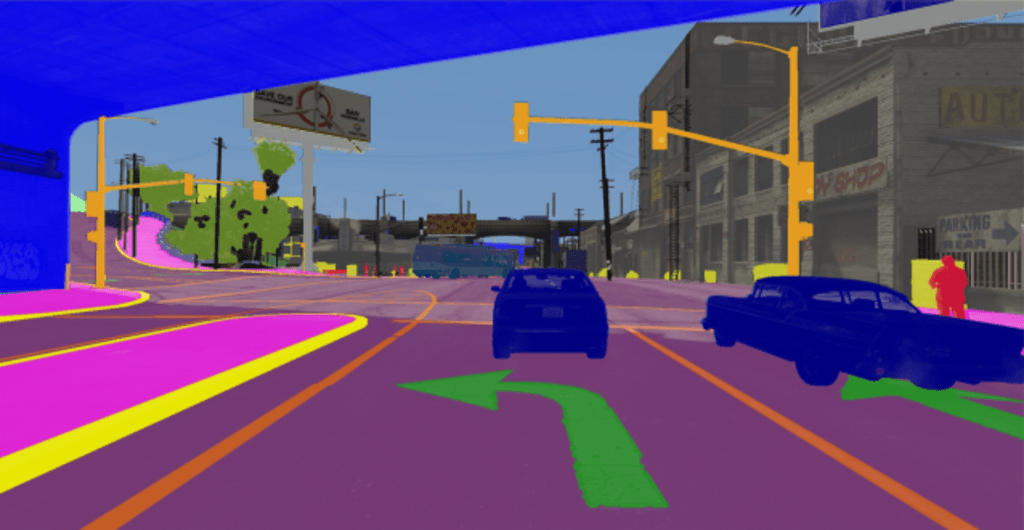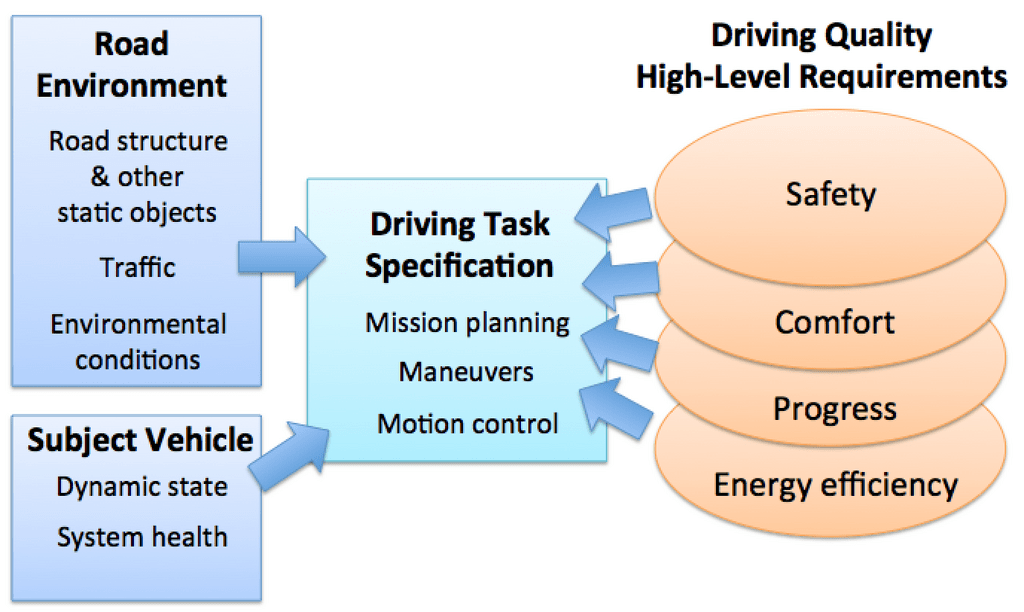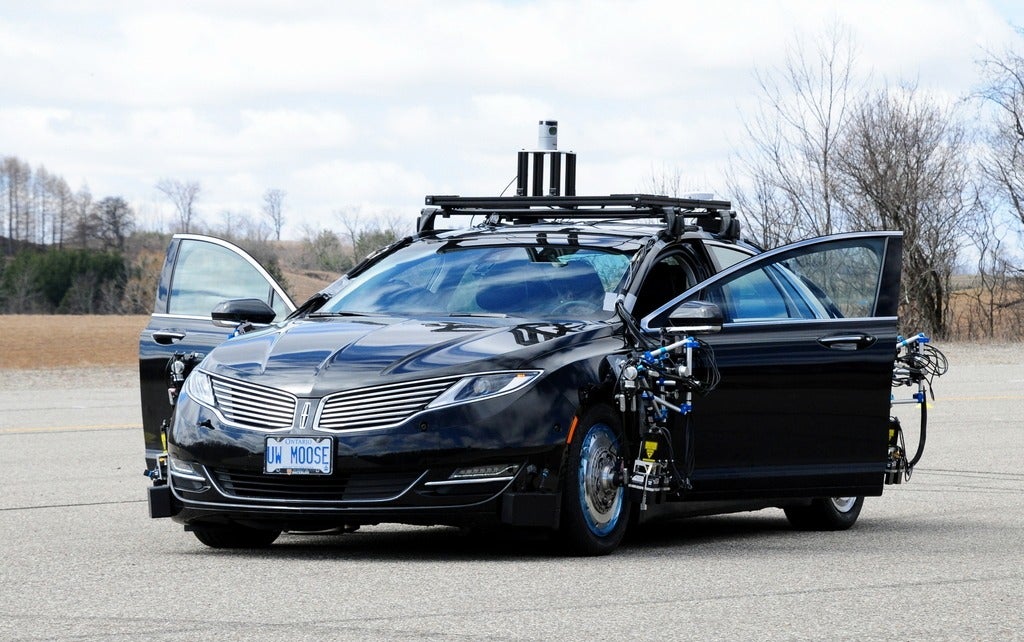Addressing the critical need for real-time and robust perception in autonomous driving, two new research papers published at EMNLP 2025 and NeurIPS 2025 introduce essential breakthroughs in Multimodal LLMs efficiency and visual intelligence. These dual contributions fundamentally accelerate road scene understanding by drastically improving data processing speed while simultaneously integrating specialized, expert-level knowledge necessary for safe and reliable navigation.
Projects - search
Filter by:
GeoScenario Server (GSS) is a road traffic scenario simulator with reactive agents (vehicles and pedestrians). GSS leverages Lanelet2 high-definition map format and a scenario modelling language called GeoScenario2. Agent behaviour is specified using Behaviour Trees.
Automatically generating test scenarios for automated driving systems whereby collisions are caused by occlusions.
Renesas CES 2017/2018 Automated Driving Demo
Software
WISE Automated Driving System (ADS) is a self-driving car software stack developed by WISE Lab. WISE ADS is a derivative of Autonomoose. It consists of the following components in these three functional areas:
Sensor drivers
Novatel Span Driver (third-party, ported to Python 3, produces GNSS data @ 20 Hz and IMU data @ 100 Hz)
This project involves the development of models of naturalistic human driving behaviour in order to test, validate, and verify behaviour planners of autonomous vehicles
We are implementing a simulator for WISE Automated Driving System (ADS). The simulator is based on UnrealEngine 4.21.
Main features:
TruPercept: Synthetic Data and Trust Modelling for Autonomous Vehicle Cooperative Perception
Real-world, large-scale semantic segmentation datasets are expensive and time-consuming to create. Thus, the research community has explored the use of video game worlds and simulator environments to produce large-scale synthetic datasets, mainly to supplement the real-world ones for training deep neural networks. Another use of synthetic datasets is to enable highly controlled and repeatable experiments, thanks to the ability to manipulate the content and rendering of the synthesized imagery.
We introduce the Precise Synthetic Image and LiDAR (PreSIL) dataset for autonomous vehicle perception. Grand Theft Auto V (GTA V), a commercial video game, has a large detailed world with realistic graphics, which provides a diverse data collection environment. Existing work creating synthetic data for autonomous driving with GTA V have not released their datasets and rely on an in-game raycasting function which represents people as cylinders and can fail to capture vehicles past 30 metres.
WiseMove is a modular safe deep reinforcement learning framework for motion planning, combining hierarchical learning and temporal logic constraints.
The project objective is to develop methods for assuring the safety of systems that rely on machine learning, such as automated vehicles.
Abstract. In training deep neural networks for semantic segmentation, the main limiting factor is the low amount of ground truth annotation data that is available in currently existing datasets. The limited availability of such data is due to the time cost and human effort required to accurately and consistently label real images on a pixel level. Modern sandbox video game engines provide open world environments where traffic and pedestrians behave in a pseudo-realistic manner. This caters well to the collection of a believable road-scene dataset.
What is WISE Drive?
"Autonomoose" is a collaboration between WISE Lab and WAVE Lab to build the University of Waterloo's self-driving research platform. The result is the "UW Moose" the first self-driving car built in Canada to drive on public roads.
See a video of our first automated drive on public roads in Waterloo in Dec 2017.
See a video of our 100 km public drive in Waterloo in Aug 2018.
For more information, visit the official website: https://autonomoosedev.wixsite.com/autonomoose/
Autonomoose was the basis of the current project WISE Automated Driving System.
Clafer is a lightweight structural and behavioral modeling language.
More more information, visit the new official website: clafer.org

